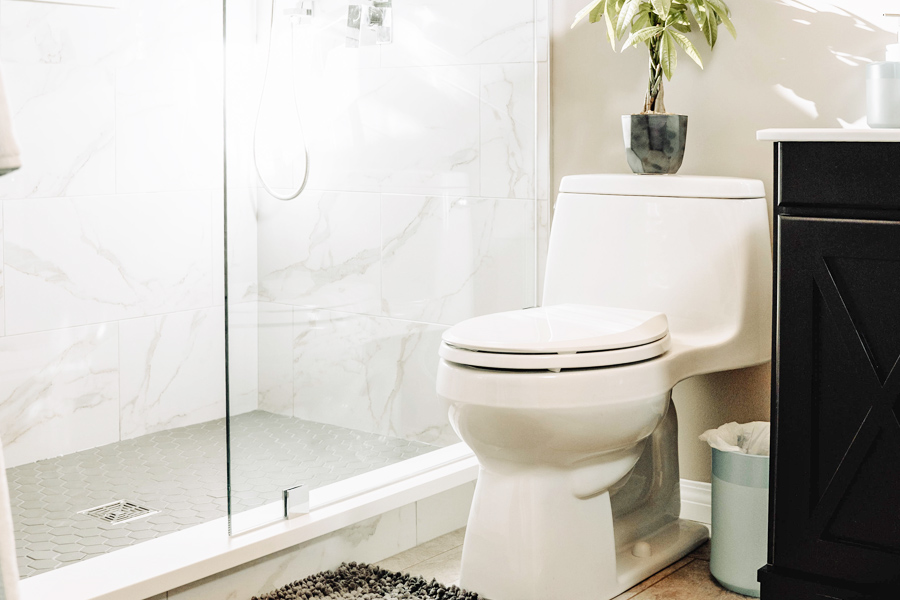The concept of water conservation is increasingly becoming a priority in our daily lives. With the global population rising and the available fresh water decreasing, every drop counts. One of the most innovative solutions in the realm of plumbing is the dual flush toilet. This modern marvel not only addresses the pressing issue of water wastage but does so with efficiency and cost-effectiveness. Understanding how dual flush toilets conserve water is crucial for homeowners, businesses, and environmental enthusiasts alike.
At its core, the dual flush toilet is a significant advancement over traditional models. Invented in the early 1980s, these toilets offer two flushing options: a low-volume flush for liquid waste and a full-volume flush for solid waste. This ability to choose the appropriate flush volume based on the waste type is what makes dual flush toilets a standout choice for water conservation.

The Mechanics of Dual Flush Toilets
Dual flush toilets are designed with distinct flushing mechanisms. Unlike the conventional toilets that use a siphoning action, these toilets utilize a wash-down flushing system. This type of flush relies on gravity and a larger trapway, which not only aids in the efficient clearance of waste but also uses less water. The dual flush system typically consists of two buttons on the cistern, each representing a different flush volume. The half flush uses approximately 3 liters (0.8 gallons) of water, while the full flush uses around 6 liters (1.6 gallons).
By employing this dual mechanism, households can significantly reduce their water usage. According to the Environmental Protection Agency (EPA), toilets account for nearly 30% of an average home's indoor water consumption, making them the main source of water usage. By switching to dual flush toilets, a typical family can save up to 20,000 gallons of water per year.
Environmental and Economic Benefits
The environmental benefits of dual flush toilets are immense. By reducing water usage, these toilets play a pivotal role in minimizing the strain on local water resources and sewage systems. Additionally, conserving water helps reduce the energy required to pump, treat, and heat water, further decreasing the carbon footprint associated with water usage.
From an economic standpoint, dual flush toilets can lead to substantial savings on water bills. As water becomes more expensive due to scarcity, investing in water-efficient appliances like dual flush toilets makes financial sense. Moreover, many municipalities offer rebates and incentives for homeowners who upgrade to water-saving fixtures, further enhancing the economic appeal of these toilets.
Installation and Maintenance Considerations
Installing a dual flush toilet is a worthwhile investment for any property. The process is relatively straightforward and similar to installing a standard toilet. However, it's essential to ensure that the plumbing system is compatible with the new toilet model. In some cases, retrofitting existing toilets with dual flush conversion kits can be an economical alternative. These kits are readily available and can transform a standard toilet into a dual flush system, providing immediate water savings.
Maintenance of dual flush toilets is generally uncomplicated. Regular cleaning and occasional checks of the flushing mechanism will ensure optimal performance. It's advisable to consult with plumbing professionals for installation and maintenance tips to maximize the efficiency and longevity of the toilet.
Challenges and Considerations
While dual flush toilets offer numerous benefits, there are some challenges to be aware of. In regions with low water pressure, the wash-down system may not perform as effectively as intended. It's crucial to assess the water pressure and consult with a plumber to determine the best solution for your bathroom setup.
Another consideration is the initial cost. Dual flush toilets tend to be more expensive than traditional models. However, the long-term savings on water bills and the environmental impact make them a smart investment. Additionally, the increasing demand for sustainable solutions is driving down costs and expanding the range of options available to consumers.
The Future of Water Conservation
The adoption of dual flush toilets is a step towards a more sustainable future. As technology advances, we can expect further innovations in water-efficient fixtures and smart plumbing solutions. For instance, smart toilets that monitor water usage and provide feedback are becoming more prevalent, helping households make informed decisions about their consumption patterns. To learn more about smart toilets, you can visit Smart Toilets for Water Conservation.
Moreover, the integration of dual flush systems in new construction projects and bathroom renovations is becoming standard practice. Builders and architects are recognizing the importance of water conservation and are incorporating these features into their designs, ensuring a sustainable approach to modern living.
Conclusion: A Small Change with a Big Impact
Understanding how dual flush toilets conserve water underscores the importance of making conscious choices in our daily lives. By adopting this simple yet effective technology, individuals and businesses can contribute to water conservation efforts, reduce their environmental footprint, and enjoy financial savings. As we move towards a more sustainable future, dual flush toilets serve as a reminder that small changes can lead to significant impacts. For more insights on dual flush toilets and water-saving strategies, check out What is a Dual Flush Toilet.

FAQs
1. Are dual flush toilets difficult to install?
Installing a dual flush toilet is similar to installing a standard toilet. However, it's advisable to consult a professional plumber to ensure compatibility and optimal performance.
2. How much water can I save with a dual flush toilet?
By switching to a dual flush toilet, a family can save up to 20,000 gallons of water per year, significantly reducing water bills and conserving local water resources.
3. Do dual flush toilets require special maintenance?
Dual flush toilets require regular cleaning and occasional checks of the flushing mechanism. It's recommended to follow manufacturer guidelines and consult with professionals for maintenance tips.






